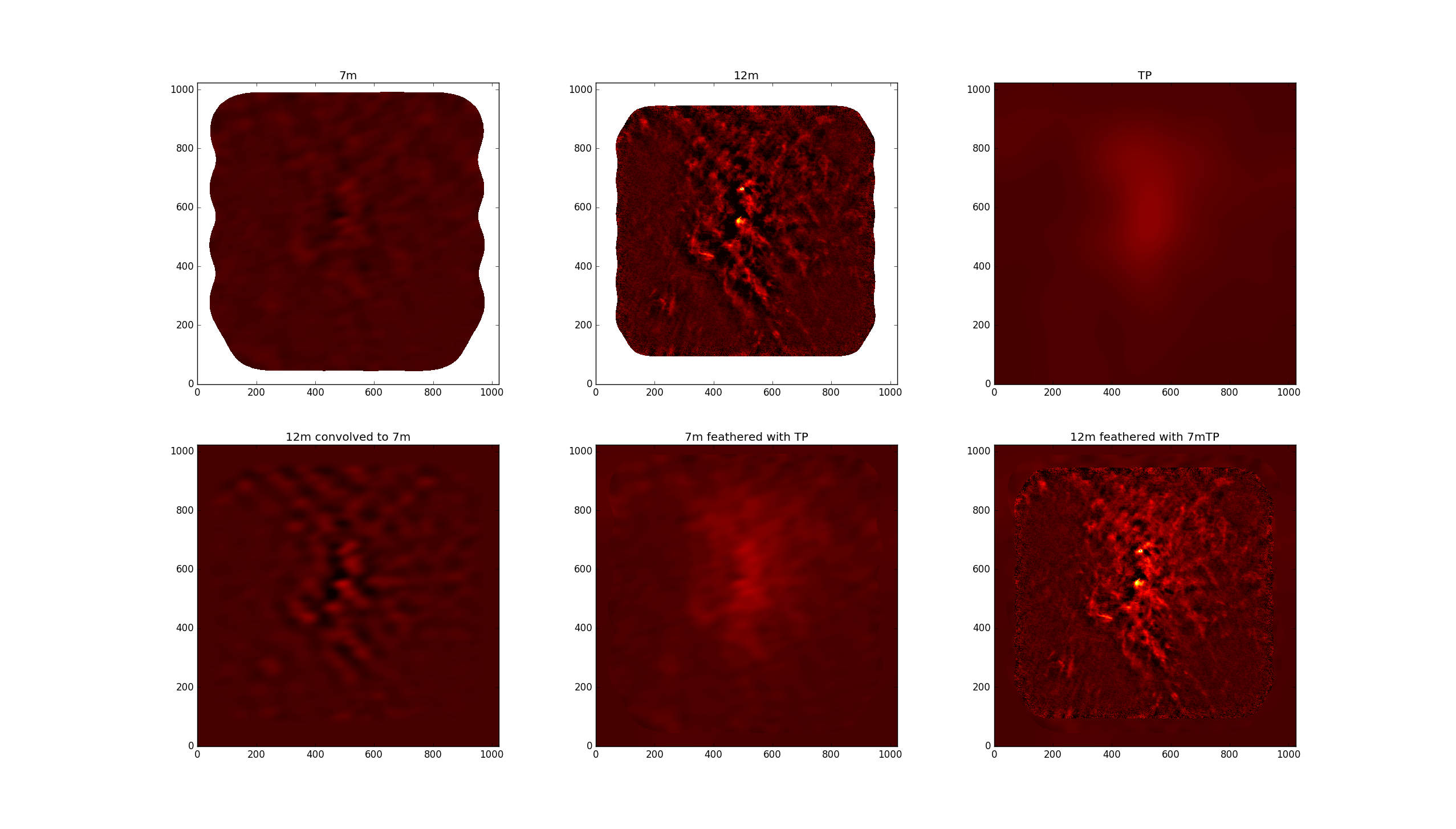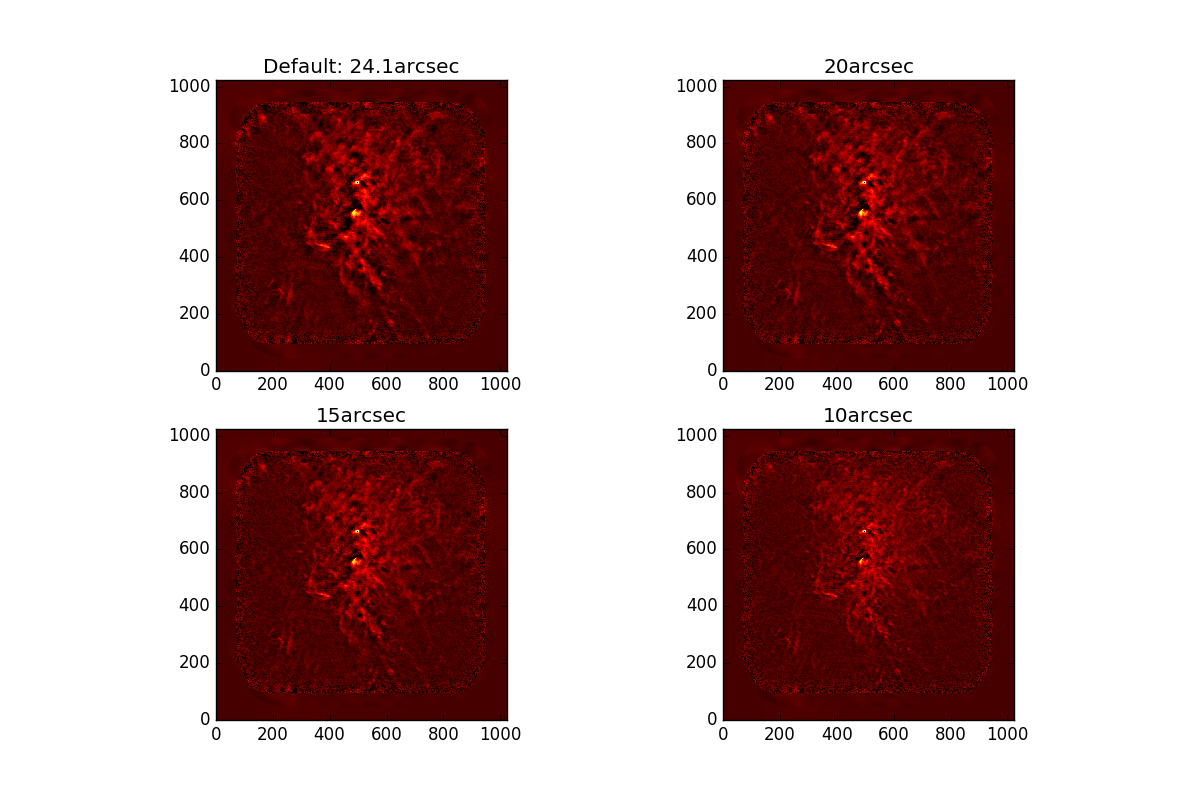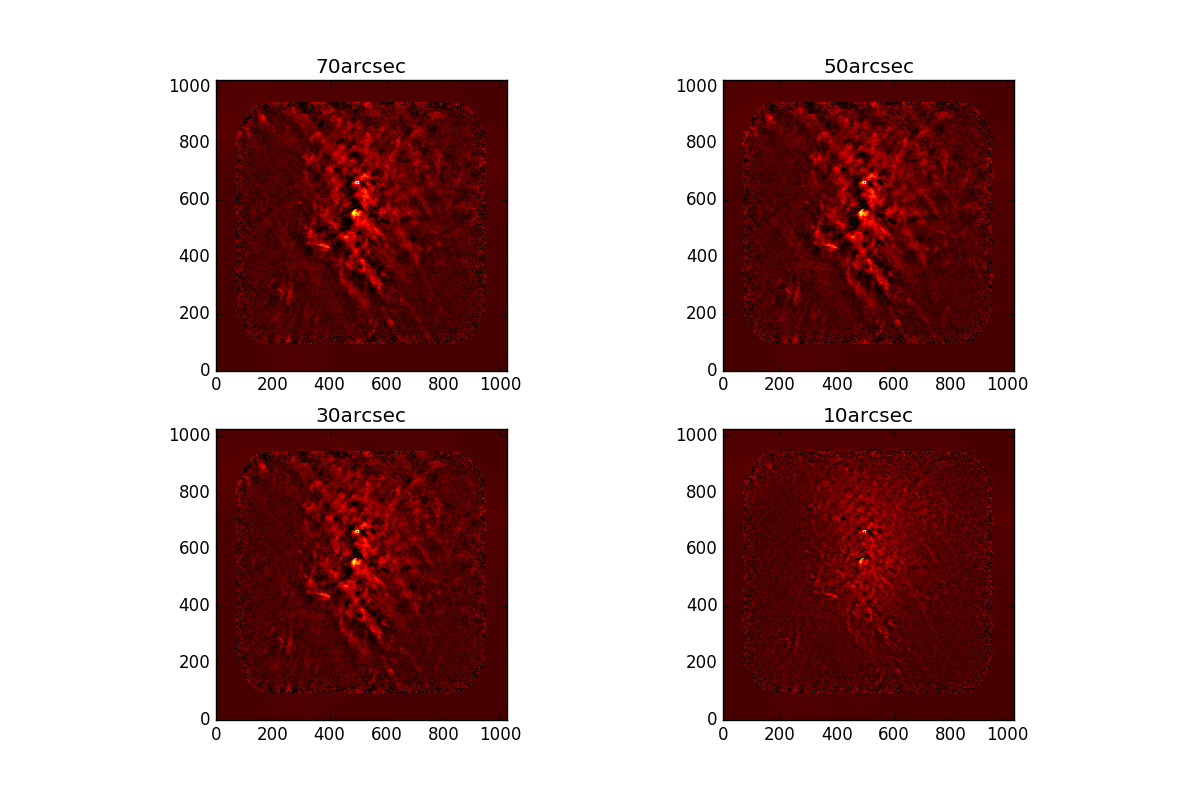Continuing from yesterday, I've done some more analysis of my HC3N data on different scales. The first critical note is that there appears to be disagreement between the 7m and 12m data. In principle, smoothing the 12m data to the 7m resolution should at most recover the 7m brightness; instead it seems that the 12m data significantly overpredict the 7m brightness.

This discrepancy is also evident in the power spectra, where there appears to be missing flux on 20-100 arcsecond scales.

So maybe it's just that the 7m data are bad?
I discussed the image combination process with Baobab, and he suggested that it may not be the flux calibration of the images (their absolute scaling) but the relative weights used to combine them. The default weights, and pretty much all variants I had experimented with, use the single-dish beam as the starting point: you weight the interferometer data by (1-SDbeam) in the fourier domain.
It turns out that, while this weighting scheme is the obvious thing to do because the single-dish beam is well-characterized, it may not be the best. The interferometer data may lose sensitivity on larger scales much faster than (1-SDbeam) would suggest.
Carrying the single-dish weight down to smaller angular scales does a better job of ensuring there are no negatives, but is it really "right"? Unfortunately, there's no good answer to this; the process is essentially the same as modifying the Briggs parameter when weighting intereferometric clean data. You just have to choose a scale, or a weighting function, and go with it. As long as the weights are conservative (i.e., sum to 1), the resulting image should in some sense be correct.

In that figure, the weighting scheme for the large angular scale data was set to a series of different Gaussians. The resolution of the 7m+TP data is (theoretically) 24x11 arcseconds, but preserving the large angular scales below the major beam axis seems to do a better job of preserving the image's positivity.
The effect is more pronounced if we just combine the 12m+TP data, ignoring the 7m data (which might be wrong anyway). For weighting FWHM above 30 arcseconds, the interferometric data dominates the map.
